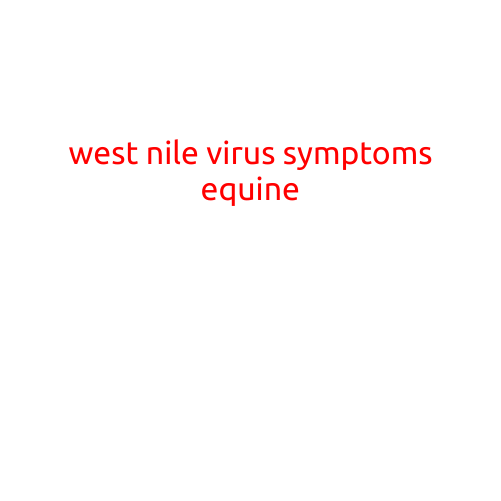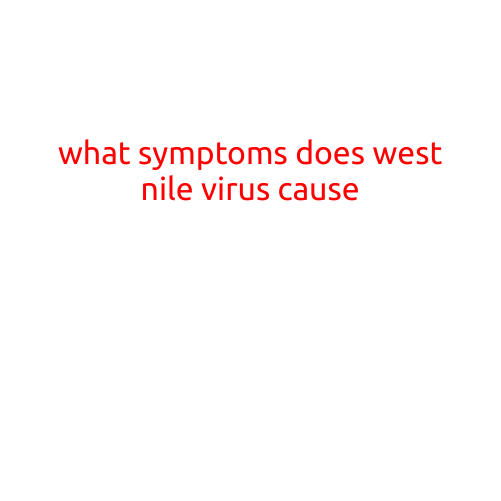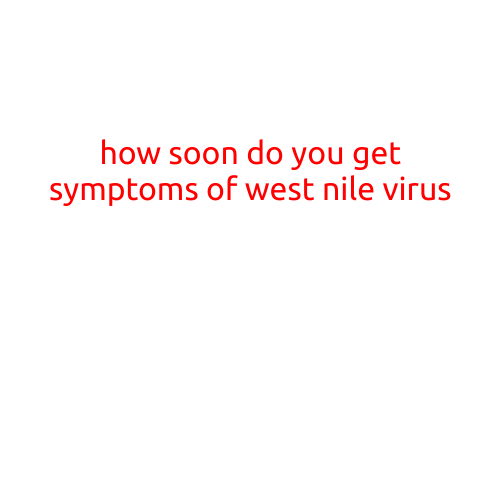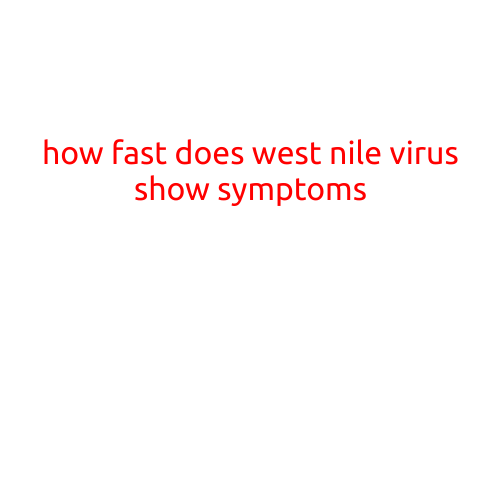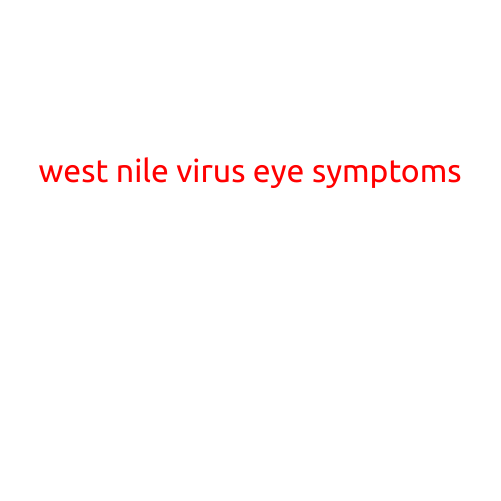
West Nile Virus Eye Symptoms: A Guide to Recognizing the Warning Signs
West Nile virus (WNV) is a mosquito-borne disease that can cause a range of symptoms, including those affecting the eyes. While it’s essential to be aware of the overall symptoms of WNV, it’s crucial to recognize the specific eye symptoms that can indicate infection. In this article, we’ll delve into the West Nile virus eye symptoms to help you better understand the warning signs and seek timely medical attention if needed.
What is West Nile Virus?
Before we dive into the eye symptoms, a quick refresher on WNV is necessary. West Nile virus is a flavivirus, a type of virus that is transmitted to humans and animals through the bite of an infected mosquito. The virus is usually asymptomatic in most people, but in some cases, it can cause mild to severe illness, including neurological infections.
Common Eye Symptoms of West Nile Virus
The West Nile virus eye symptoms can vary in severity, but they often occur in the following forms:
- Eye Pain or Discomfort: This is one of the most common eye symptoms of WNV, causing a feeling of pressure or discomfort in the eyes.
- Redness or Inflammation: The eyes may become red, swollen, or inflamed, due to increased blood flow or infection.
- Double Vision: In some cases, WNV infection can cause double vision, a symptom that can be distressing and difficult to ignore.
- Blurred Vision: People infected with WNV may experience blurred vision, making it challenging to perform daily activities.
- Sensitive to Light: Infection can cause sensitivity to light, making it painful to participate in activities outdoors.
- Eye Discharge or Crusting: Yellow or green discharge and crusting on the eyelids and in the eyes can be another symptom of WNV infection.
- Chalazion or Stye: WNV infection can also cause chalazion (a painful swelling of the eyelid) or stye (a lump on the eyelid).
- Keratitis: In some severe cases, WNV infection can cause keratitis, an inflammation of the cornea that can lead to vision loss.
Other Symptoms to Watch Out For
While eye symptoms are common, it’s essential to monitor your overall health and watch out for other symptoms that may indicate a WNV infection, including:
- Fever
- Headache
- Muscle weakness
- Tremors or confusion
- Rash
- Weakness or paralysis of the face, arms, or legs
Diagnosis and Treatment
If you or someone you know exhibits West Nile virus eye symptoms, it’s crucial to consult a healthcare professional. A definitive diagnosis can be made through:
- Blood tests: Laboratory tests can detect the presence of WNV antibodies in the blood.
- PCR (polymerase chain reaction) tests: These tests can detect the genetic material of WNV in the blood, urine, or cerebrospinal fluid.
Treatment for WNV infection typically involves supportive care, such as:
- Rest and hydration
- Pain management
- Antiviral medication
- Eye drops or ointments for eye inflammation
Prevention is Key
While recognizing West Nile virus eye symptoms is essential, prevention is the best way to avoid infection. To minimize your risk of getting infected:
- Wear insect repellent
- Avoid outdoor activities during peak mosquito hours (dawn and dusk)
- Wear protective clothing
- Eliminate standing water around your home
- Install window and door screens
By staying informed about West Nile virus eye symptoms and taking necessary precautions, you can reduce your risk of infection and protect your health. If you experience any unusual eye symptoms or suspect WNV infection, consult a healthcare professional promptly to receive timely medical attention.
